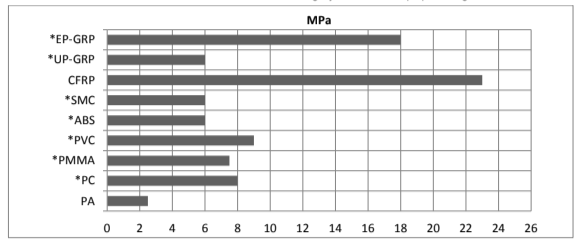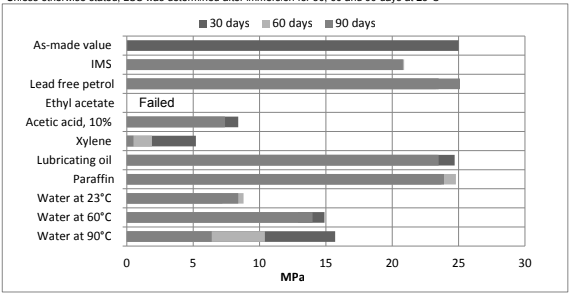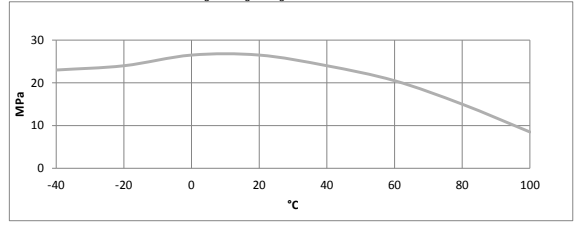Enhanced TDS
Identification & Functionality
- Chemical Family
- RTU Product Type
- Technologies
- Product Families
Features & Benefits
- Ready-to-Use Product Features
- Key Properties
- Excellent ratio working time / cure time
- Toughened
- Multi-purpose
- Tolerant to “less than ideal” pretreatment
- Gap filling to 4mm
Applications & Uses
Technical Details & Test Data
- Processing
Pretreatment
The strength and durability of a bonded joint are dependent on proper pretreatment of the surfaces to be bonded, however the methacrylate adhesives can be used effectively with little surface preparation. Ideally joint surfaces should be cleaned with a good degreasing agent such as acetone, iso-propanol (for plastics) or other proprietary degreasing agents in order to remove all traces of oil, grease and dirt. Low grade alcohol, gasoline (petrol) or paint thinners should never be used. The strongest and most durable joints are obtained by either mechanically abrading or chemically etching (“pickling”) the degreased surfaces. The system is available in cartridges incorporating mixers and can be applied as ready to use adhesive with the aid of the tool recommended by Huntsman Advanced Materials.
Application of adhesive
The resin/hardener mix may be applied manually or robotically to the pretreated and dry joint surfaces. Huntsman's technical support group can assist the user in the selection of an suitable application method as well as suggest a variety of reputable companies that manufacture and service adhesive dispensing equipments. A layer of adhesive 0.25 to 0.5 mm thick will normally impart the greatest lap shear strength to the joint. For some metals like mild steel or stainless steel, a higher joint thickness may be necessary to reach satisfactory results. Huntsman stresses that proper adhesive joint design is also critical for a durable bond. The joint components should be assembled and secured in a fixed position as soon as the adhesive has been applied. For more detailed explanations regarding surface preparation and pretreatment, adhesive joint design, and the dual cartridge dispensing system, visit www.aralditeadhesives.com.
Equipment maintenance
All tools should be cleaned with hot water and soap before adhesives residues have had time to cure. The removal of cured residues is a difficult and time-consuming operation. If solvents such as acetone are used for cleaning, operatives should take the appropriate precautions and, in addition, avoid skin and eye contact.
- Curing Speed Information
Typical times to minimum shear strength
Temperature °C 10 15 23 40 Cure time to reach hours - - - - LSS > 1MPa minutes 30 17 12 6 Cure time to reach hours - - - - LSS > 10MPa Minutes 40 25 17 10 LSS = Lap shear strength.
- Cured Properties
Unless otherwise stated, the figures given below were all determined by testing standard specimens made by lap- jointing 114 x 25 x 1.6 mm strips of aluminum alloy. The joint area was 12.5 x 25 mm in each case. The figures were determined with typical production batches using standard testing methods. They are provided solely as technical information and do not constitute a product specification.
Average lap shear strengths of typical metal-to-metal joints (ISO 4587) (typical average values)
Cured for 16 hours at 40°C and tested at 23°C, pretreatment – sandblasting and degreasing*Steel 37 / 11 and Stainless steel V4A: tested with adhesive joint thickness of 0.25 mm, the performance may be
lower for thinner adhesive joints.
Average lap shear strengths of typical plastic-to-plastic joints (ISO 4587) (typical average values)
Cured for 16 hours at 40oC and tested at 23°C. Pretreatment - Lightly abrade and isopropanol degrease.
*: EP-GRP / UP-GRP / SMC / ABS / PVC / PMMA / PC: substrate failure observed
Tensile Properties (ISO 527) (typical average values) cure 16 hours at 40°C tested at 23°C
Tensile Strength : 45 MPa
Tensile Modulus : 1700MPa
Elongation at break : >5 %Lap shear strength versus immersion in various media (ISO 4587) (typical average values)
On aluminium, cured for 16 hours at 40°C and tested at 23°C. Pretreatment - Sandblasting and degreasing.
Unless otherwise stated, LSS was determined after immersion for 30, 60 and 90 days at 23°C
Lap shear strength versus tropical weathering (ISO 4587) (typical average values)
(40°C/ 92% RH), on aluminium, cured 16 hours at 40°C and tested at 23°C. Pretreatment - Sandblasting and degreasing
Lap shear strength versus heat ageing (ISO 4587) (typical average values)
On aluminium, cure: 16 hours at 40°C and tested at 23°C. Pretreatment - Sandblasting and degreasing
Lap shear strength versus temperature (ISO 4587) (typical average values)
On aluminium. Pretreatment :sandblasting and degreasing. Cure: 16 hours at 40°C
Lap shear strength versus Thermal cycling (ISO 4587) (typical average values)
On aluminium. Pretreatment: sandblasting and degreasing. Cure: 16 hours 40°C
100 cycles of 6 hours duration from -30°C to 70°C: 27 MPa
(2h -30°C / 1 h up to 70°C / 2h 70°C / 1h down to -30°C)
Packaging & Availability
- Packaging Type
Storage & Handling
- Storage Conditions
Araldite® F 362-1 / Hardener F 362-1 may be stored during 24 months at 2 – 8°C provided the components are stored in the original sealed containers. The expiry date is indicated on the packaging. The product may be placed at room temperature before use, the total time at room temperature should not exceed 9 months. Long term exposure above 25°C will reduce the shelf life of the product.
Other
- Application Information
Value Units Test Method / Conditions Mix Ratio 1.0 %(W) %(W) Hardener : Resin - Physical Properties
Value Units Test Method / Conditions Specific Gravity approx. 1.0 -
